Arthur Roullier
TexSliders: Diffusion-Based Texture Editing in CLIP Space
May 01, 2024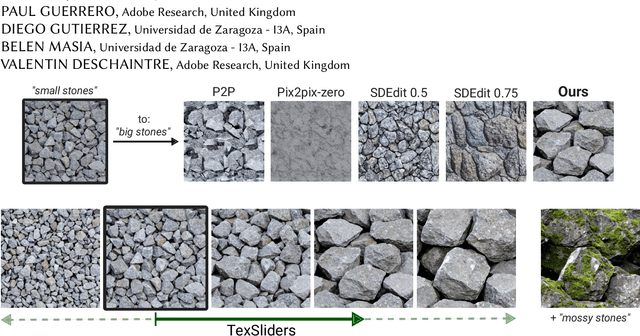
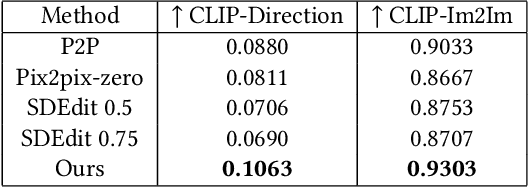
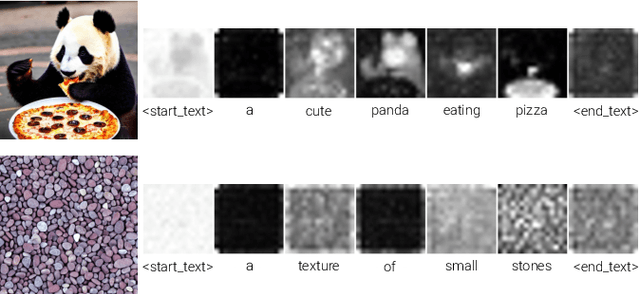
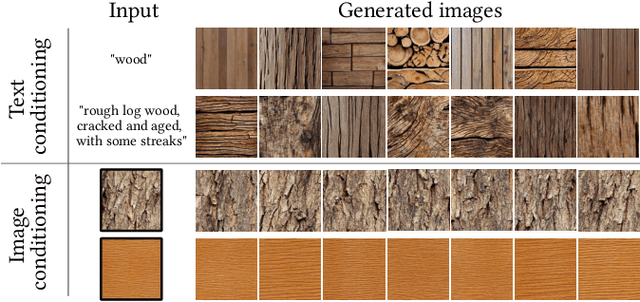
Abstract:Generative models have enabled intuitive image creation and manipulation using natural language. In particular, diffusion models have recently shown remarkable results for natural image editing. In this work, we propose to apply diffusion techniques to edit textures, a specific class of images that are an essential part of 3D content creation pipelines. We analyze existing editing methods and show that they are not directly applicable to textures, since their common underlying approach, manipulating attention maps, is unsuitable for the texture domain. To address this, we propose a novel approach that instead manipulates CLIP image embeddings to condition the diffusion generation. We define editing directions using simple text prompts (e.g., "aged wood" to "new wood") and map these to CLIP image embedding space using a texture prior, with a sampling-based approach that gives us identity-preserving directions in CLIP space. To further improve identity preservation, we project these directions to a CLIP subspace that minimizes identity variations resulting from entangled texture attributes. Our editing pipeline facilitates the creation of arbitrary sliders using natural language prompts only, with no ground-truth annotated data necessary.
ControlMat: A Controlled Generative Approach to Material Capture
Sep 04, 2023
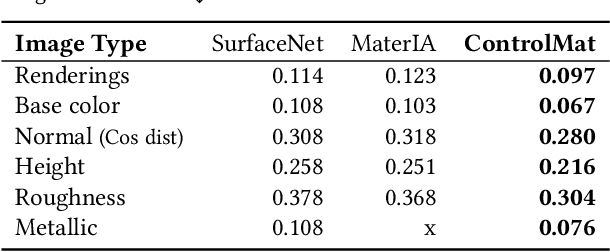
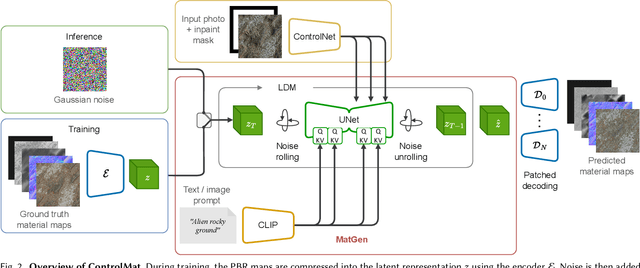

Abstract:Material reconstruction from a photograph is a key component of 3D content creation democratization. We propose to formulate this ill-posed problem as a controlled synthesis one, leveraging the recent progress in generative deep networks. We present ControlMat, a method which, given a single photograph with uncontrolled illumination as input, conditions a diffusion model to generate plausible, tileable, high-resolution physically-based digital materials. We carefully analyze the behavior of diffusion models for multi-channel outputs, adapt the sampling process to fuse multi-scale information and introduce rolled diffusion to enable both tileability and patched diffusion for high-resolution outputs. Our generative approach further permits exploration of a variety of materials which could correspond to the input image, mitigating the unknown lighting conditions. We show that our approach outperforms recent inference and latent-space-optimization methods, and carefully validate our diffusion process design choices. Supplemental materials and additional details are available at: https://gvecchio.com/controlmat/.
Paying U-Attention to Textures: Multi-Stage Hourglass Vision Transformer for Universal Texture Synthesis
Feb 23, 2022



Abstract:We present a novel U-Attention vision Transformer for universal texture synthesis. We exploit the natural long-range dependencies enabled by the attention mechanism to allow our approach to synthesize diverse textures while preserving their structures in a single inference. We propose a multi-stage hourglass backbone that attends to the global structure and performs patch mapping at varying scales in a coarse-to-fine-to-coarse stream. Further completed by skip connection and convolution designs that propagate and fuse information at different scales, our U-Attention architecture unifies attention to microstructures, mesostructures and macrostructures, and progressively refines synthesis results at successive stages. We show that our method achieves stronger 2$\times$ synthesis than previous work on both stochastic and structured textures while generalizing to unseen textures without fine-tuning. Ablation studies demonstrate the effectiveness of each component of our architecture.
 Add to Chrome
Add to Chrome Add to Firefox
Add to Firefox Add to Edge
Add to Edge